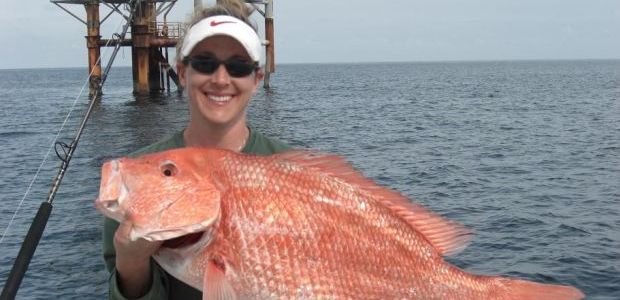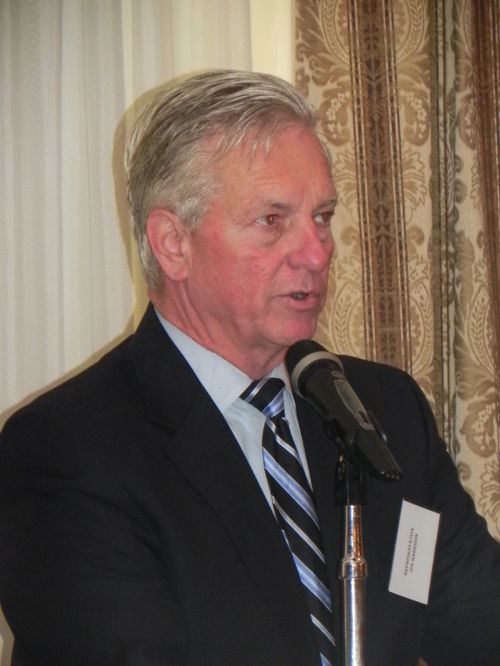
Snapper Ban? Allain proposed bill raises ire
April 3, 2013
State finances a concern for local lawmakers
April 3, 2013Local business boosters are seeking ways for ports in Terrebonne and Lafourche to fit into new global economy scenarios.
Civic and business leaders say a recent trip to Panama, where the canal linking the Pacific and Atlantic oceans is being upgraded – has helped plant the seeds for future local projects and plans.
But they also caution that any realization of those ideas is still a long way off.
Expansion of local ports and waterways to accommodate an expected influx of bigger container ships due to the Panama Canal project is one idea that was examined. Development of a liquefied natural gas facility at a local port, or rigging one or more to be capable of fueling newer fleets of vessels switching over from diesel to natural gas are also in the mix.
“We identified a huge opportunity in the exportation of liquefied natural gas,” Steve Vassallo, director of the Terrebonne Economic Development Authority, said of the recent fact-finding trip to Panama. “U.S. shale gas exportation to Latin America has led to the conversion of several Gulf coast ports into LNG export points. We determined to investigate how the Port of Terrebonne and Port Fourchon might be able to capitalize on the opportunity.”
Leading that effort is Port of Terrebonne Director David Rabalais, who also traveled to Panama.
“One of the things we heard a lot of was that people are interested in receiving LNG,” Rabalais said. “We are looking into whether or not that is an opportunity for us. You would need a lot of private money to do it. It is a very expensive undertaking and we may be a little late on the curve. I don’t see it as a very strong possibility.”
One complication is the nature of the substance, which must be created at port through a process that makes environmental watchdogs and regulators nervous.
The Sierra Club is among organizations that has called for a ban on LNG development – some of it slated for a location in Cameron Parish – until regulators fully assess the risks.
“Exporting natural gas is dirty and dangerous, and puts American families at risk,” said Michael Brune, executive director of the Sierra Club, when his organization filed a formal protest against the Cameron export proposal.
“The Sierra Club’s challenge contends that the Cameron export proposal would lead to increased air and water pollution in Louisiana and Texas and raise domestic natural gas prices. The filing calls for a full Environmental Impact Statement to study the extent of this proposed facility’s environmental damages before the Department of Energy makes any final decisions. Weighing these threats is particularly important because the oil and gas industry currently exploits numerous loopholes and exceptions in federal safeguards, putting the health and safety of Americans at risk.”
Opposition regarding LNG exports filed by the Sierra Club, a powerful voice in environmental circles, is not limited to Cameron. Projects in Cove Point, Md., Sabine Pass, La., Coos Bay, Ore. and Freeport, Texas, are also subject to the organization’s concerns.
The potential for such opposition and expenses associated with it are one of the reasons Rabalais has suggested the possibility of his port getting into the LNG production and transport business is not strong.
“It could open up opportunities for other areas,” Rabalais said of the global interest in LNG.
Port Fourchon is currently working on projects that exploit LNG potential but with less of a litigation risk and start-up issues.
Marvin Odum, president of Shell Oil Company, announced last month that his company has plans for a barging and bunkering operation at Fourchon, through a partnership with Edison Chouest Offshore.
“Natural gas is an abundant and cleaner-burning energy source in North America, and Shell is leveraging its LNG expertise and integrated strength to make LNG a viable fuel option for the commercial market,” Odum said. “We are investing now in the infrastructure that will allow us to bring this innovative and cost-competitive fuel to our customers.”
Shell’s game plan, as described by Odum, is to install a small-scale liquefaction unit – which makes the natural gas usable for its purposes – at its chemical plant in Geismer.
“Once operational, this unit will supply LNG along the Mississippi River, the Intra-Coastal Waterway and to the offshore Gulf of Mexico and the onshore oil and gas exploration areas of Texas and Louisiana,” a statement from the company reads. “To service oil and gas and other industrial customers in Texas and Louisiana, Shell is expanding its existing relationship with fuels and lubricants re-seller Martin Energy Services … (to) provide terminaling, storage, transportation and distribution of LNG.”
Through the agreement with Chouest, which at this point is contained in a memorandum of understanding, transport barges will move the fuel from Geismer to Port Fourchon. At Port Fourchon the liquid gas would be “bunkered” into vessels of Shell’s customers.
How the nation and world’s bullish approach to natural gas in liquid form will affect Fourchon, through Shell’s statements, takes on clarity.
But Shell isn’t the only player in LNG, business people maintain. The potential for bunkering at the Port of Terrebonne, conversations with Rabalais indicate, clearly exists, as does use of local ports, potentially, for fueling up oilfield service vessels that are converting from diesel to gas.
The Panama Canal will be doubled by the time its expansion is completed in 2015, according to government estimates from that nation. Bigger ships than ever before will be able to pass, and the quantity of ships will increase.
The canal offers the potential for more ship traffic to and from Louisiana, industry leaders agree.
“The first step is to identify potential investors to promote opportunities in Panama, especially LNG,” Rabalais said. “Subsequent steps include expanding our deep-water operations and cargo trade.”
Despite some of the potential roadblocks to specific ideas, Rabalais says he isn’t ruling anything out at this point.
“There may be someone who needs a market for LNG here,” said Rabalais, who has plenty of room for expansion at the Port of Terrebonne.
About 200 acres of a 400-acre tract is leasable at this point. But there are plans for further development on additional land at the port, and plans are already underway for a road through areas that have not yet been utilized.
“We have to get things permitted and developed as well,” Rabalais said. “It’s an on-going process.”









